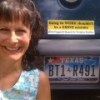I'm eager to listen in on tomorrow's congressional hearing about workplace safety. It's being conducted by the House Committee on Education and the Workforce, Subcommittee on Workforce Protections, with the title "Workplace Safety: Ensuring a Responsible Regulatory Environment." That's a heading that probably means different things to different people, and those of us watching would probably benefit if Members define the phrase, "responsible regulatory environment" and explained responsible to whom?
The subcommittee chairman, Tim Walberg (R-MI), has noted previously the "creative tension" between safety regulations and job creation. He says some "regulations are dearly hurting our ability to create jobs in this country," leading me to believe that he has examples of workplace safety rules that don't ensure a responsible regulatory environment. I'll have my ears open for his list and evidence, and those of any other members of the subcommittee.
In contrast, a hearing about a "responsible regulatory environment" for worker safety could mean one that responds effectively to conditions that put workers' lives and health at risk. Examples could be the ways that:
OSHA targets violators of health and safety standards;
OSHA focuses inspection resources on bad actor companies to ensure the playing field is level for employers who that follow the law; and
rules that give workers the right to access information assembled or maintained by their employer about hazards.
Other examples could be ways in which individuals affected by a hazard or the potential regulation of a hazard have an opportunity to participate in rulemaking. An examination of the "regulatory environment" might include assessing how well OSHA
follows the numerous procedural steps to ensure the public has ample opportunity to comment on proposed regulatory changes, and
meets all of its legal thresholds for issuing a new standard.
Witnesses at the hearing will include the OSHA chief David Michaels, PhD, the president of Korellis Roofing (Hammond, IN), attorney David Sarvadi, and Peg Seminario (Director H&S, AFL-CIO).

Will any non union employers or trade associations be at the hearing? Less than 10% of workers in industry are represented by unions. From the list you have: government/academia/OSHA, a union roofer, attorney and more union.
Looks biased.
I'm assuming that Korellis Roofing is also representing the National Roofing Contractors Association. I don't know whether Korellis is a union shop, or not. Do you know?
Three locals listed on their web page
http://www.korellisroofing.com/about_affiliations.asp
He may be a member of the NRCA that employees workers from the locals listed. Most roofers in America are non union.
And he conducts work in Indiana and Illinois both are NOT right to work states. Nothing wrong about this, however it only represents a minority of the workers conducting this type of work. It would be good to hear from smaller companies which are the ones that do most of this type of work.
You may be right he may be representing the NRCA.
They had THIS GUY talk about fall protection? http://osha.gov/pls/imis/establishment.inspection_detail?id=305201600